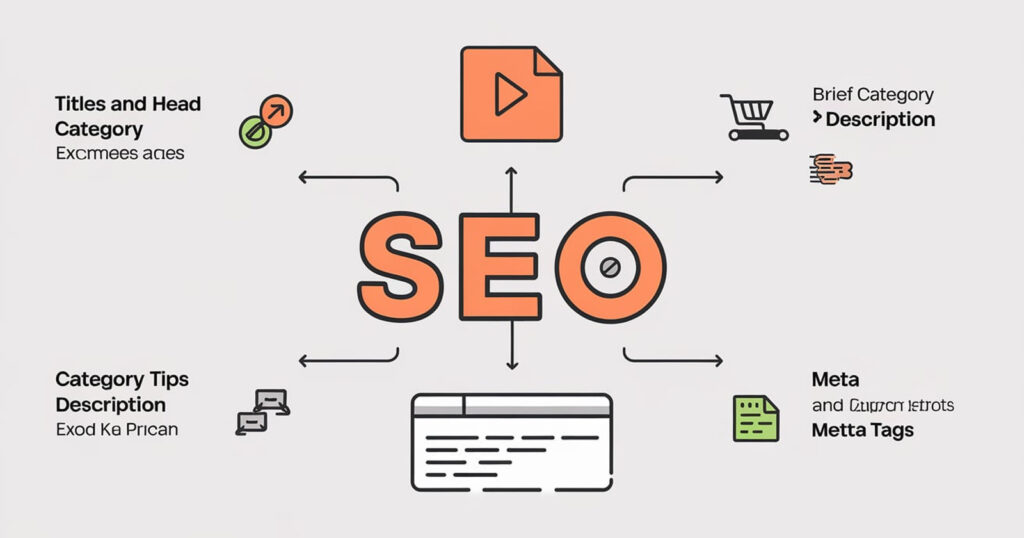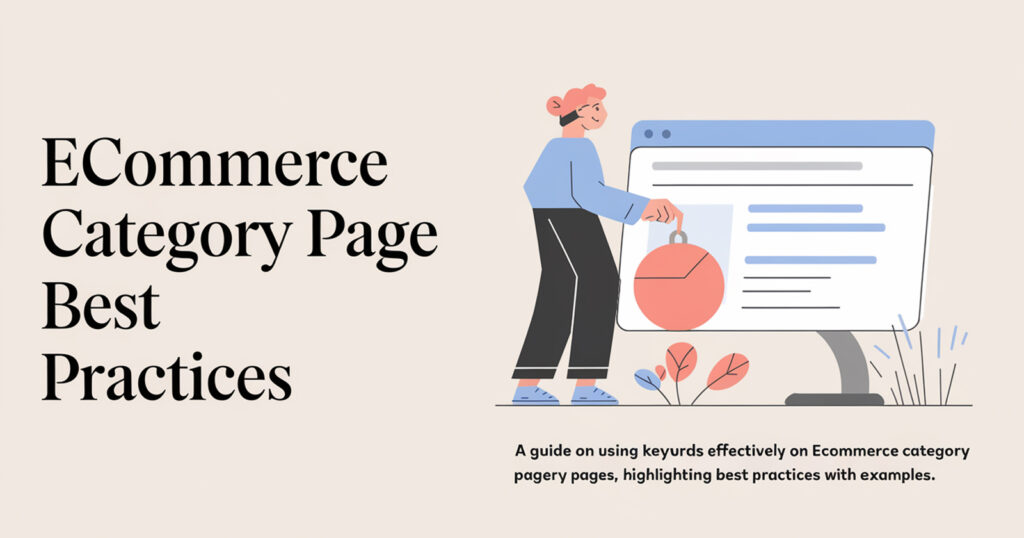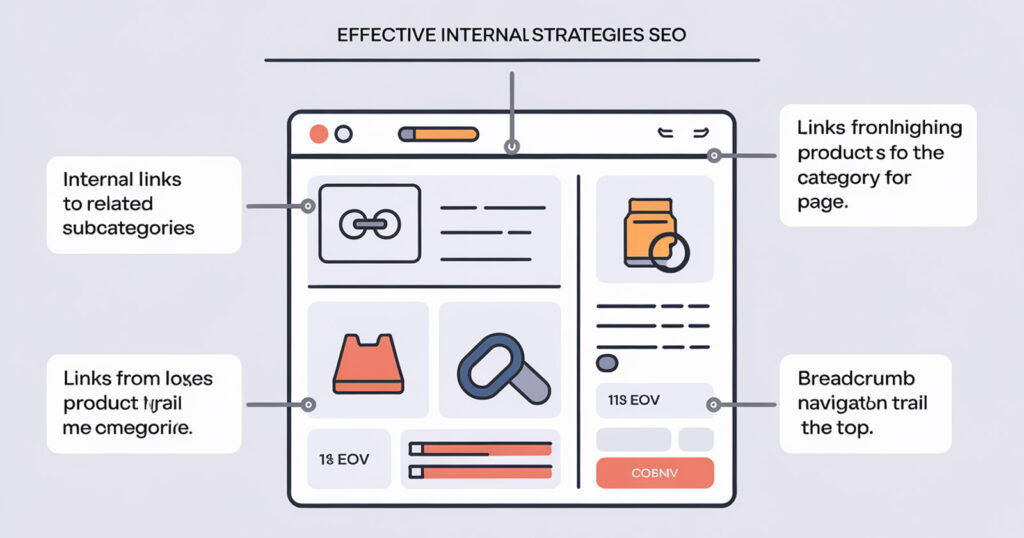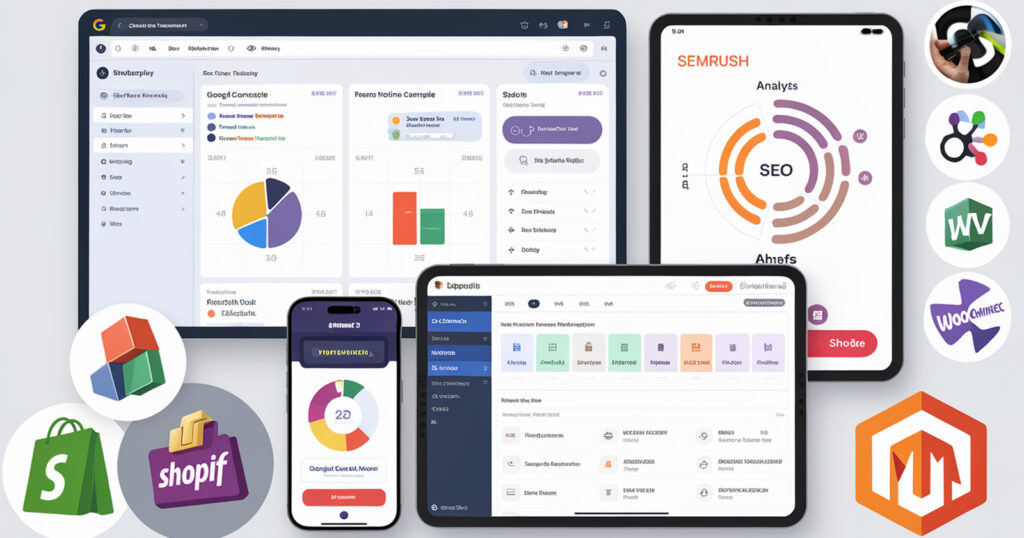
In the world of ecommerce, your category pages play a vital role in connecting potential customers with your products. Often overlooked, category pages not only help with site navigation but also significantly impact search engine optimization (SEO). By optimizing your ecommerce category page SEO, you can improve rankings, drive more organic traffic, and provide a better user experience.
In this guide, we’ll dive deep into how to structure and optimize your ecommerce category pages, the importance of keyword usage, internal linking strategies, and the best ecommerce SEO platforms and tools to help you succeed.
Why Ecommerce Category Page SEO Matters
Category pages are essential because they group your products by type, making it easier for users to browse and for search engines to understand your site structure. However, many ecommerce websites fail to optimize these pages for SEO, focusing solely on product pages instead. Optimized category pages help:
- Improve search engine rankings for key product groups
- Enhance the user experience by organizing products efficiently
- Drive more traffic from both broad and long-tail keywords
By focusing on ecommerce category page SEO, you can ensure that these crucial pages not only aid navigation but also boost visibility on search engines.
How to Structure Your Ecommerce Category Pages for SEO

The structure of your category pages influences how well search engines can crawl and index your content. A clean, well-organized structure also makes it easier for users to find what they need. Here’s how to optimize the structure:
1. Create Descriptive, Keyword-Rich Titles and Headers
- Page Title: Your category page title should clearly describe the types of products being offered while incorporating relevant keywords. For example, “Men’s Running Shoes” is better than just “Shoes” as it provides specificity.
- H1 Header: Ensure each category page has a clear, keyword-optimized H1 header that accurately reflects the content of the page. For instance, an H1 for a category page could be “Shop the Latest Men’s Running Shoes.”
2. Write Unique and Engaging Category Descriptions
The description on your category page should not only help users understand what’s offered but also be optimized for search engines. Many ecommerce stores either skip this or add thin, duplicate content.
- Avoid Thin Content: Aim for 150-300 words that include primary and secondary keywords, but avoid keyword stuffing. For example, a category page for “Winter Jackets” could mention different types of jackets, materials, and popular brands.
- Use Keywords Naturally: Incorporate long-tail keywords, such as “affordable men’s winter jackets,” naturally into the description to help improve rankings.
3. Optimize Meta Titles and Meta Descriptions
Meta titles and descriptions are critical elements for SEO because they tell search engines what the page is about. They also appear in search results, influencing click-through rates.
- Meta Title: Ensure that your meta title includes your main keyword and is concise. A title like “Buy Men’s Winter Jackets – Affordable & Stylish | Brand Name” is more engaging and keyword-optimized than a generic one.
- Meta Description: Write compelling meta descriptions that include keywords and offer a call to action. Example: “Shop the latest men’s winter jackets at Brand Name. Find affordable, stylish coats for every occasion.”
Best Practices for Using Keywords on Ecommerce Category Pages

The right keyword strategy is essential for ecommerce category page SEO. Here are some tips to help you use keywords effectively:
1. Conduct Thorough Keyword Research
Start by using ecommerce SEO tools like Google Keyword Planner, Ahrefs, or SEMrush to find relevant keywords. Focus on both short-tail (e.g., “men’s jackets”) and long-tail keywords (e.g., “affordable men’s winter jackets”). Look for keywords that balance search volume and competitiveness.
2. Target Long-Tail Keywords
Long-tail keywords often have lower competition and higher intent. For category pages, these keywords will help attract customers who are further along in the buying process. For example, a category page for “luxury watches” might target long-tail phrases like “men’s luxury leather strap watches.”
3. Include Keywords in Strategic Places
Once you’ve identified the right keywords, place them in strategic locations on your category page:
- Page title
- H1 header
- Meta title and description
- URL slug (e.g., yoursite.com/mens-winter-jackets)
- Category description
Avoid overusing keywords also called keyword stuffing. Search engines favor content that reads naturally, so focus on creating a user-friendly experience first and foremost.
Internal Linking Strategies for Category Page SEO

Internal linking helps search engines understand the structure of your website while encouraging users to navigate through different sections of your site. Here’s how to optimize internal linking for category pages:
1. Link to Related Categories and Subcategories
Within each category page, link to relevant subcategories and related products. For example, if you’re on a “Men’s Running Shoes” page, you can link to a subcategory like “Performance Running Shoes” or a related category like “Men’s Sports Apparel.”
2. Link from Product Pages Back to Category Pages
Make sure your individual product pages link back to the relevant category page. This ensures that search engines view your category page as an important hub for related products and helps with SEO.
3. Use Breadcrumb Navigation
Breadcrumbs are a navigational aid that shows users the path they’ve followed within your site. For example, “Home > Men’s Clothing > Men’s Winter Jackets.” Breadcrumbs not only enhance the user experience but also help search engines understand the hierarchy of your site.
Ecommerce SEO Tools to Enhance Your Category Pages

To optimize your ecommerce category page SEO effectively, you’ll need the right set of tools. Here are some of the top ecommerce SEO tools and platforms to consider:
1. Google Search Console
Google Search Console helps you track your site’s search performance, identify crawl issues, and monitor keyword rankings. You can also use it to submit an updated sitemap that reflects changes to your category structure.
2. SEMrush
SEMrush is one of the most powerful tools for keyword research and competitive analysis. It allows you to track which keywords your category pages are ranking for, identify new opportunities, and monitor competitors.
3. Ahrefs
Ahrefs is a popular tool for backlink analysis, helping you identify where you can build links to your category pages. It also offers robust keyword tracking and content analysis features.
4. Yoast SEO (for WooCommerce)
If you’re using WooCommerce, the Yoast SEO plugin makes it easy to optimize meta tags, descriptions, and other SEO elements for your category pages. It also integrates seamlessly with WordPress, offering actionable SEO insights.
5. Best Ecommerce SEO Platforms
When considering the best ecommerce SEO platform, options like Shopify, BigCommerce, WooCommerce, and Magento stand out for their strong SEO capabilities. These platforms allow easy integration with SEO tools, and they offer built-in features like clean URL structures, customizable meta tags, and mobile-friendly themes.
Conclusion
Optimizing your ecommerce category page SEO is a key element in driving organic traffic and improving user experience. By structuring your category pages properly, targeting the right keywords, and implementing internal linking strategies, you can make your category pages more visible to search engines and more appealing to shoppers.
Using the right ecommerce SEO tools and platforms further enhances your efforts, allowing you to stay ahead in the competitive online retail market. Whether you handle SEO in-house or work with an agency, focusing on your category pages will pay off in the long run with higher rankings and increased sales.
Ready to elevate your ecommerce SEO strategy? Let 7Roars optimize your category pages for maximum visibility and conversion. Let’s drive growth together!
Frequently Asked Question (FAQs)
Optimizing category pages helps improve search engine rankings, attract more organic traffic, and create a better user experience by organizing products efficiently and improving website navigation.
Key elements include keyword-rich page titles, unique category descriptions, meta titles and descriptions, optimized images, and internal links to relevant categories or products.
Internal linking helps search engines crawl your site more effectively and allows users to easily navigate between related products or categories, which can improve rankings and the overall user experience.
Long-tail keywords are more specific phrases that often have lower competition and higher intent, helping your category pages rank for highly targeted searches and attracting customers who are closer to making a purchase.
Tools like Google Search Console, SEMrush, Ahrefs, and Yoast SEO (for WooCommerce) help with keyword research, monitoring performance, and optimizing technical aspects of SEO for ecommerce category pages.
